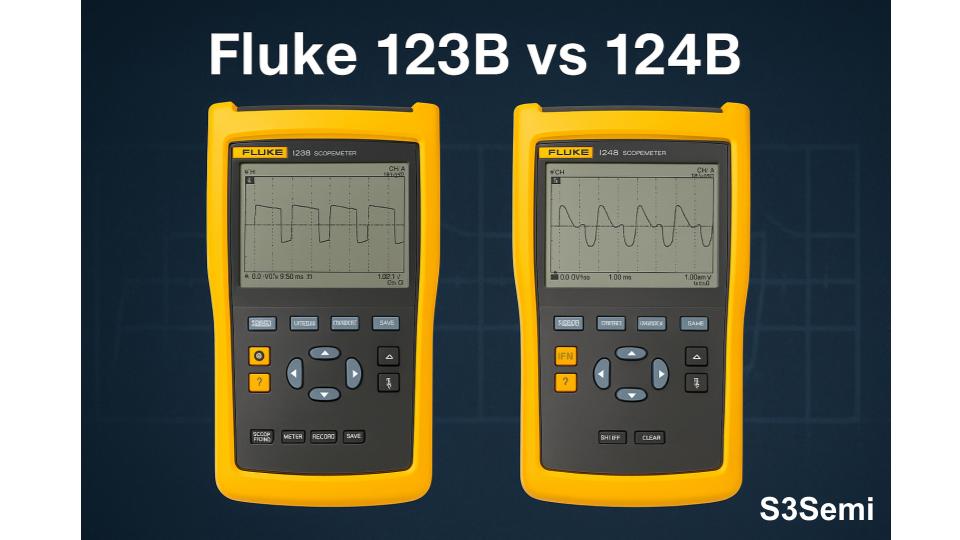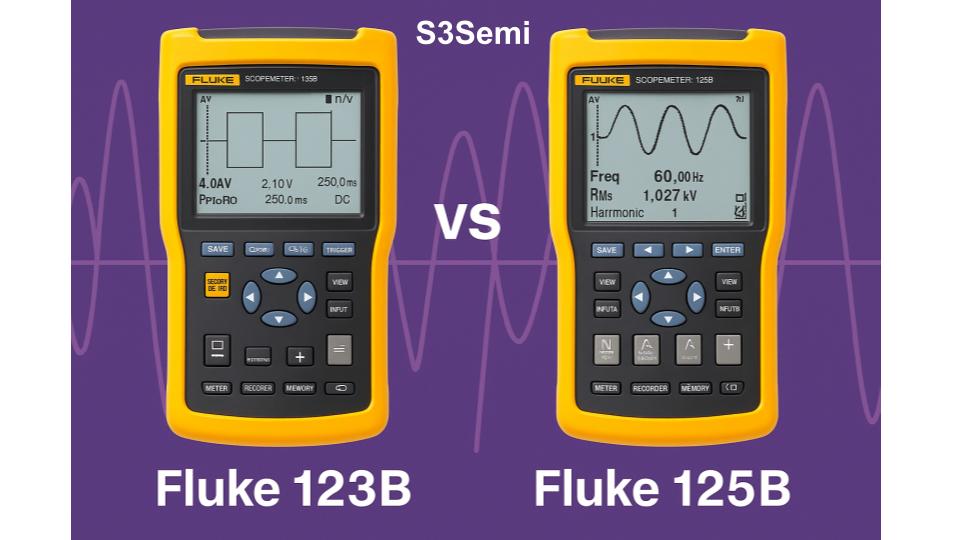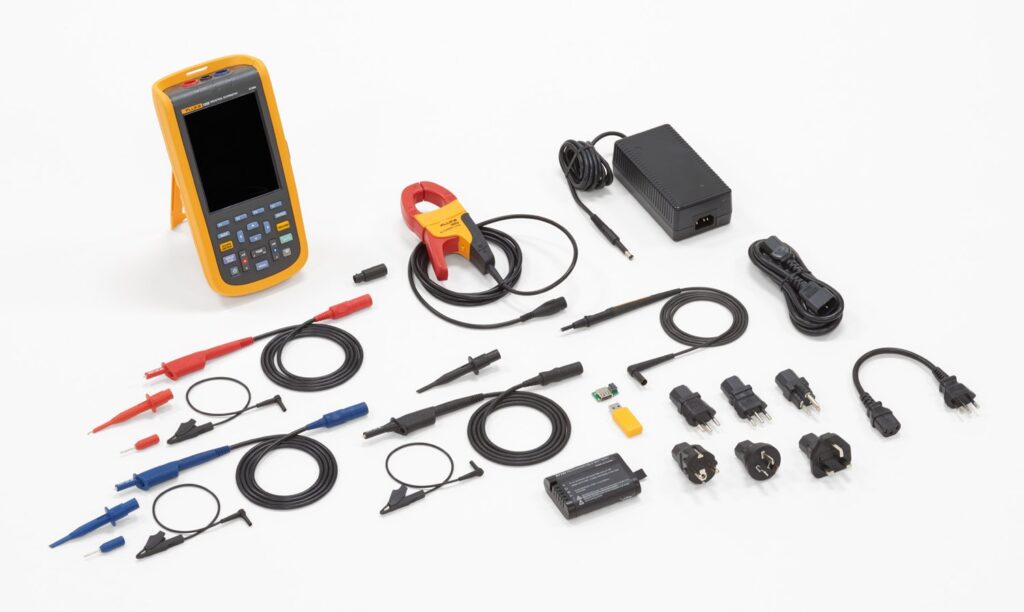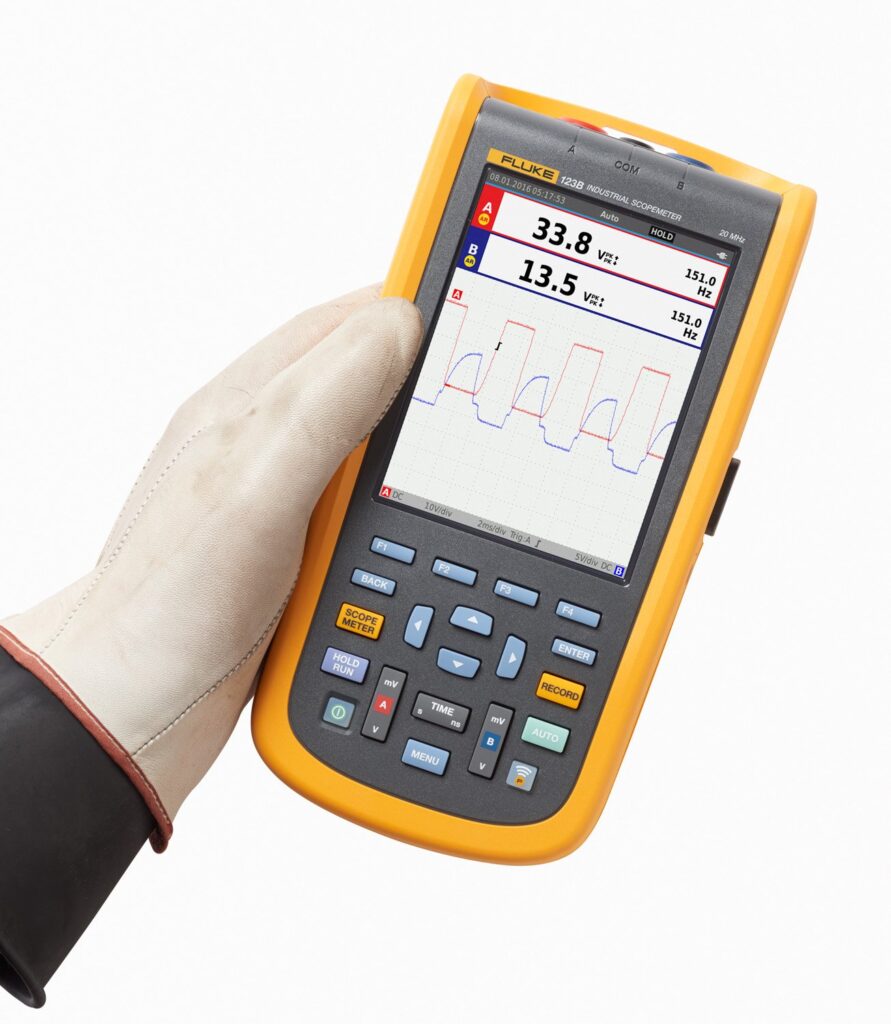Fluke’s ScopeMeter 120B Series has become a benchmark in portable oscilloscopes, combining the functions of an oscilloscope, multimeter, and recorder into one rugged handheld device. Among this lineup, the Fluke 123B and Fluke 125B are two of the most sought-after models.
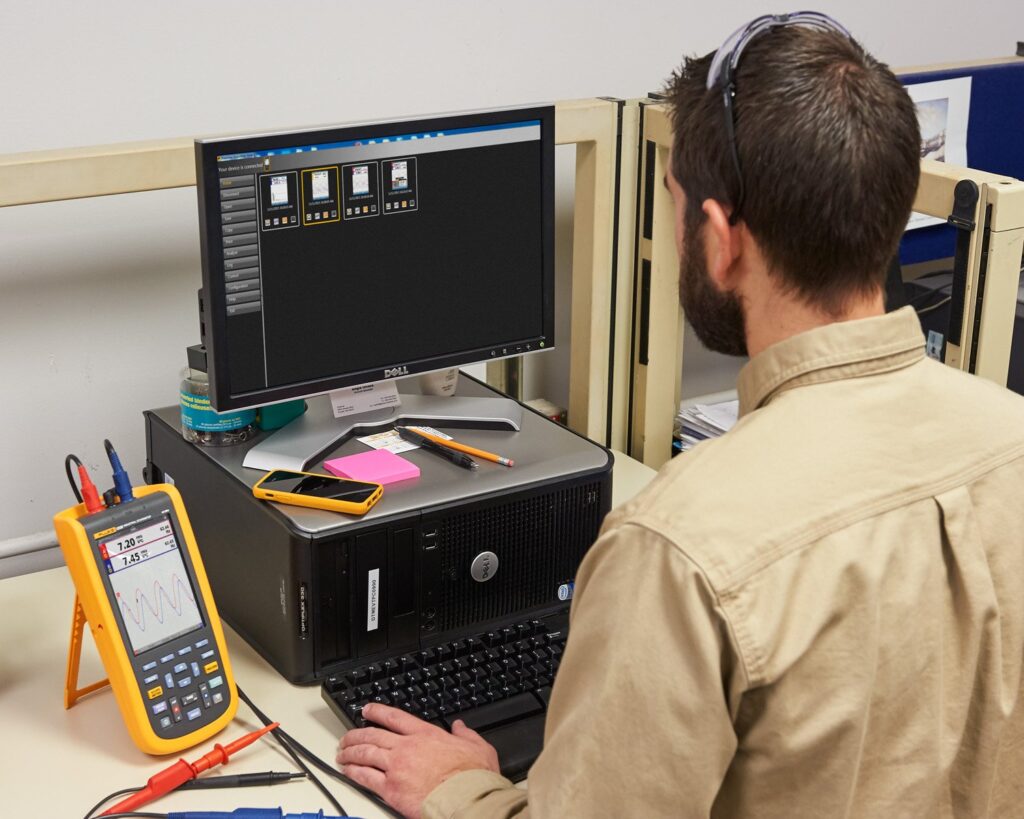
🏷️ Fluke Multimeter Deals ⭐⭐⭐⭐
While both share the same tough design and easy-to-use interface, they cater to different levels of troubleshooting – from basic electrical work to advanced industrial diagnostics. Here’s how they compare.
⚙️ Overview
The Fluke 123B is designed for general electrical and electronic maintenance, offering the essential dual-channel oscilloscope and multimeter functions most technicians need in the field.
The Fluke 125B, on the other hand, is built for industrial and automation professionals who need detailed signal analysis, bus testing, and advanced measurement features.
| Feature | Fluke 123B | Fluke 125B |
|---|---|---|
| Bandwidth | 20 MHz | 40 MHz |
| Sample Rate | 40 MS/s | 40 MS/s |
| Rise Time | 17.5 ns | 8.75 ns |
| Automatic Measurements | 14 | 22 |
| BusHealth Test | No | Yes |
| Power Quality Analysis | Basic | Advanced (including harmonics) |
| ScopeRecord™ Length | 14 000 points | 14 000 points |
| Safety Rating | CAT IV 600 V / CAT III 1000 V | CAT IV 600 V / CAT III 1000 V |
| Recommended For | Electrical troubleshooting | Industrial control and automation diagnostics |
| 💳 Pricing | 💲Check Price | 💲Check Price |
🔍 Key Differences
🚀 Bandwidth and Measurement Depth
The Fluke 125B offers double the bandwidth (40 MHz vs 20 MHz), allowing it to capture higher-frequency waveforms and faster signal transitions. This makes it better suited for complex control systems, PWM drives, and data communication lines.
🧠 BusHealth Test
A major differentiator is the BusHealth Test feature found on the 125B. This tool quickly checks the integrity of industrial communication buses such as CAN, Profibus, RS-232, RS-485, and Modbus, helping maintenance teams identify signal-level or termination issues.
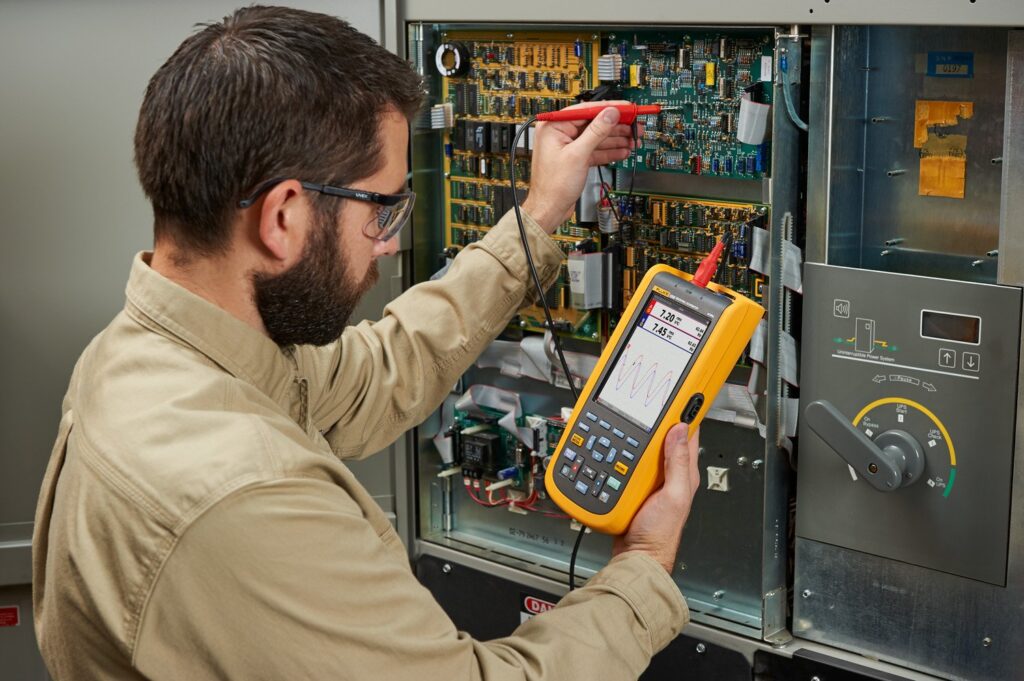
⚡ Power and Harmonic Analysis
The 125B includes advanced power analysis tools that display frequency, phase, and harmonics up to the 33rd order – critical for diagnosing unbalanced loads, motor drives, and distorted waveforms in industrial systems.
The 123B, by contrast, provides only basic RMS voltage and current readings, ideal for simpler electrical systems.
🧩 Triggering and Capture
The 125B expands triggering options (edge, pulse width, video, and bus triggers), enabling more precise waveform capture. The 123B relies mainly on edge triggering, suitable for general work but limited in diagnosing complex transients.
📊 TrendPlot™ and ScopeRecord™
Both models feature Fluke’s TrendPlot™ function for long-term monitoring and ScopeRecord™ for high-resolution capture of intermittent faults. This makes both powerful for predictive maintenance, but the 125B adds automatic event markers and enhanced replay options.
🔋 Portability and Design
Both models share the same robust housing:
- Battery life: Up to 7 hours of continuous use
- Display: High-contrast monochrome LCD for outdoor visibility
- Safety: CAT IV 600 V rated, suitable for direct connection to power systems
- Charging: 80% charge in just 1 hour
Fluke designed both to survive the realities of fieldwork – from factory floors to substations.
📶 Connectivity and Data Management
Both units integrate with Fluke Connect®, allowing measurements to be logged, shared, and analyzed via smartphone or PC. The 125B, however, supports deeper integration with FlukeView® ScopeMeter Software, which enables waveform storage, analysis, and report generation.
🧰 Ideal Use Cases
| Application | Recommended Model | Why |
|---|---|---|
| Basic electrical and electronic troubleshooting | Fluke 123B | Simple, reliable, and affordable |
| Industrial automation systems | Fluke 125B | BusHealth and harmonic diagnostics |
| Motor drive and power electronics | Fluke 125B | Higher bandwidth, power analysis |
| Training labs or general maintenance | Fluke 123B | Easy to use and cost-effective |
💡 Which One Should You Choose?
If your work revolves around voltage, current, and basic waveform analysis, the Fluke 123B will meet your needs without the higher price tag.
If you handle automation networks, variable-frequency drives, or complex control signals, the Fluke 125B is the smarter investment. Its advanced diagnostics and BusHealth testing can prevent costly downtime in industrial systems.
✅ Final Verdict
- Fluke 123B: Best for electricians and field technicians needing reliable, straightforward troubleshooting.
- Fluke 125B: Best for engineers and maintenance specialists dealing with industrial communication, automation, and power quality.
Both models carry Fluke’s hallmark ruggedness and precision – the difference lies in how deep you need to go in your diagnostics.
